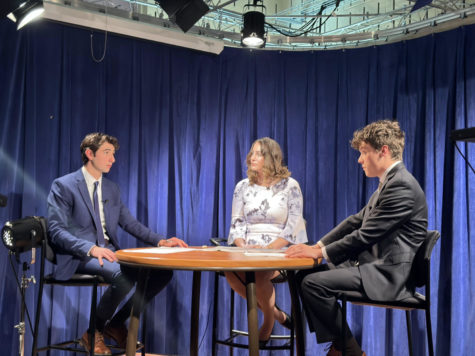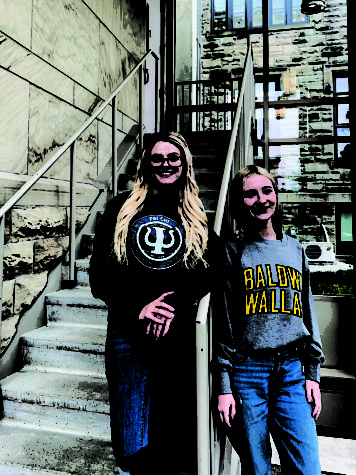ID required to vote in May 2 election, out-of-state students impacted
While one in five undergraduate students at Baldwin Wallace University are out-of-state students, Ohio’s new voter ID law may make in person voting a bit more difficult.
Out-of-state students can no longer use a drivers license from their home state in order to vote in upcoming elections.
The May 2 special election is the first election in which Ohio voters must provide photo identification to vote in person, a guideline that could impact out-of-state college students.
House Bill 458 requires proof of identification for in-person voting and places other restrictions on mail-in voting. The bill was signed into law in January 2022 by Governor Mike DeWine.
Valid IDs voters can show include an Ohio driver’s license, an Ohio State ID, a temporary ID issued by the Bureau of Motor Vehicles, a military ID or a U.S. passport. Voters will not be able to present a driver’s license from any state other than Ohio.
The bill also includes a provision that makes obtaining a state-issued ID free of charge. However, if an out-of-state college student chooses to acquire a state-issued ID, this would invalidate their out-of-state driver’s license.
According to statistics from the common data set of Baldwin Wallace University students on bw.edu, over one-in-five undergraduate students at BW come from out of state.
In a report conducted by the University of Maryland’s Center for Democracy and Civic Engagement, it was found that 24 percent of people aged 18-29 do not have driver’s license, and 3.1 million Americans aged 18-29 lacked any up-to-date government-issued photo ID.
Maryland’s Center for Democracy and Civic Engagement also found that Black Americans are more than two times less likely to have a government-issued photo ID compared to white Americans. After the North Carolina legislature rushed a bill in 2018 that included a similar provision requiring photo ID 2018, the law was struck down in the state Supreme Court after a judge ruled that the law unfairly discriminated against Black Americans.
“The provisions enacted … were formulated with an impermissible intent to discriminate against African American voters in relation of the North Carolina Constitution,” Associate Justice Anita Earls wrote in the Court’s majority opinion.
Bride Rose Sweeney, the Democratic Ohio State Representative representing Berea, voted against the bill and said that she was thinking of college students and Black Ohioans when she made her decision.
“The vast majority of my colleagues do not care about young people because they do not feel that they are the electoral vote,” Sweeney said. “And we often make choices that go against a vast majority of what young people want in the state, and this is continual evidence as to why they would put forward something that so specifically targets, not just young people but young people that are getting an education.”
HB 458 was created because of fears regarding election integrity, but Sweeney said it is not a valid reason.
The Secretary of State Frank LaRose’s office identified fewer than 30 “potentially illegal” votes. Still, Ohio State Senator Jerry Cirino (R-Kirtland), who was a cosponsor of HB 458, said that the bill is a preventative measure for election fraud.
“We don’t have to wait to have election fraud in order to put steps in place to make sure it never happens and that’s what this [HB 458] is,” Cirino said.
Sweeney said that most students do not have a permanent address and that they should be able to vote where they live.
“If you’re a student at Baldwin Wallace and you want to vote in that location because that’s where you’re living, you can,” Sweeney said. “If you want to say where you’re living is back home in Pennsylvania, and you want to go there, you have that choice. That’s how it works, and nobody should be telling students they should or should not be able to vote if they so choose.”
On the other hand, Cirino said that the bill makes it so that students cannot “have it both ways.”
“You have to decide where your residency is. That’s what governs where you vote,” Cirino said.
While Ohioans only need to show proof of identification if they are voting in person, the law also introduced changes to how a person could vote through mail-in-ballots and early voting.
These provisions include only allowing one ballot drop box per county, limiting the time to request absentee ballots to a week before Election Day, making the Monday prior to election day the last day for early voting and limiting the number of days that the County Board of Elections can receive absentee ballots up to four days after the election.
Jackets Engaged, a non-partisan political engagement team affiliated with the Brain Center for Community Engagement usually collects absentee ballots in the basement of the student union in Strosacker Hall.
Hannah Dodson, sophomore neuroscience major and the co-student director of Jackets Engaged, said that social media has made our generation more inclined to the immediacy of in-person voting as opposed to voting through an absentee ballot.
“[Our generation doesn’t] really do early voting because they want to go on Election Day and see that immediacy of being able to vote and boom and you’re done,” Dodson said. “And it’s always hyped up, but early voting and mail-in voting has very little say in the media.”
The Exponent is looking for financial contributions to support our staff and our newsroom in producing high-quality, well-reported and accurate journalism. Thank you for taking the time to consider supporting our student journalists.



















































